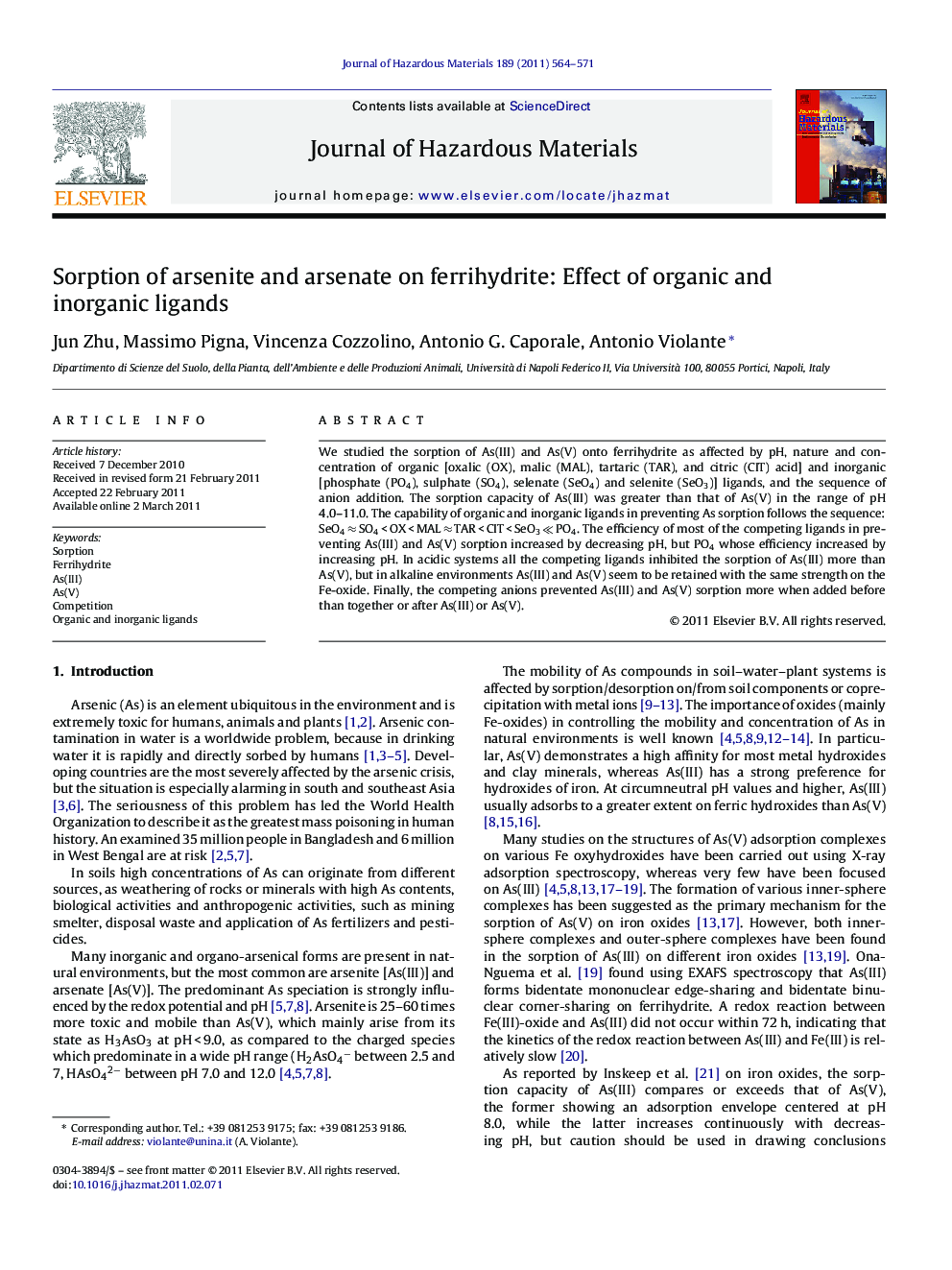| Article ID | Journal | Published Year | Pages | File Type |
|---|---|---|---|---|
| 579408 | Journal of Hazardous Materials | 2011 | 8 Pages |
Abstract
We studied the sorption of As(III) and As(V) onto ferrihydrite as affected by pH, nature and concentration of organic [oxalic (OX), malic (MAL), tartaric (TAR), and citric (CIT) acid] and inorganic [phosphate (PO4), sulphate (SO4), selenate (SeO4) and selenite (SeO3)] ligands, and the sequence of anion addition. The sorption capacity of As(III) was greater than that of As(V) in the range of pH 4.0-11.0. The capability of organic and inorganic ligands in preventing As sorption follows the sequence: SeO4 â SO4 < OX < MAL â TAR < CIT < SeO3 âªÂ PO4. The efficiency of most of the competing ligands in preventing As(III) and As(V) sorption increased by decreasing pH, but PO4 whose efficiency increased by increasing pH. In acidic systems all the competing ligands inhibited the sorption of As(III) more than As(V), but in alkaline environments As(III) and As(V) seem to be retained with the same strength on the Fe-oxide. Finally, the competing anions prevented As(III) and As(V) sorption more when added before than together or after As(III) or As(V).
Related Topics
Physical Sciences and Engineering
Chemical Engineering
Chemical Health and Safety
Authors
Jun Zhu, Massimo Pigna, Vincenza Cozzolino, Antonio G. Caporale, Antonio Violante,
